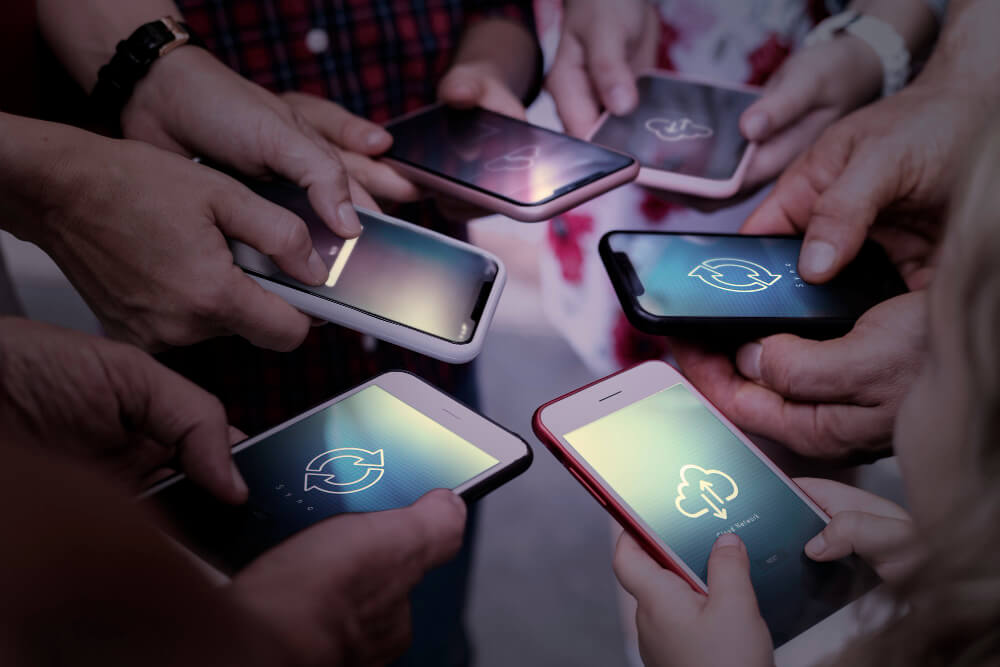Since their advent in the late 1990s, smartphones have gained popularity in the global market— with about 1.14 billion units sold globally in 2023. For the most part, smartphones can be categorised as low-end, mid-range, or high-end devices, coming in a wide range of models and features.
There is still a considerable difference of opinion pertaining to the average lifespan of mobile devices. Smartphones are frequently replaced quickly for both technological and socioeconomic reasons. In fact, recent trends indicate that the average replacement cycle for mobile phones has shortened to less than two years, which has environmental implications.
This blog aims to unpack the factors that affect smartphone durability, as well as discuss the repairability and reliability of different smartphone brands.
Why does phone lifespan matter?
People frequently “upgrade” their old phones when they are still fully functional in today’s consumerist society. In fact, manufacturers are continually competing with one another to build smarter, thinner, and more attractive phones due to technology advancements and fashion whims.
Unfortunately, this results in a staggering volume of unsustainable and preventable e-waste. Since less than 16% of all e-waste is recycled annually, most of it ends up in landfills.
E-waste emits dangerous contaminants like lead, arsenic, mercury and zinc, as well as brominated flame-retardants. These pollutants contaminate the atmosphere and negatively impact the health of the surrounding population. This is an undeniable global concern for both customers and manufacturers.
To exacerbate issues, the manufacture of a single smartphone generates about 45-120kg of CO2 emissions. So, when phones are discarded prematurely, the embodied emissions and resources are wasted.
That being said, understanding your phone’s lifespan is essential to getting the most out of it and reducing waste. As smartphones grow more integral to daily living, users must strike a balance between performance and sustainability.
Understanding the projected lifespan of a smartphone can help consumers make more informed decisions about what to buy, enabling them to spend their money on long-lasting and better-performing gadgets. This knowledge may also encourage more deliberate consumption, which lowers the need for replacements and their related expenses.
Furthermore, realising that many smartphones can have longer useful lives can motivate users to maintain and fix their gadgets rather than throw them away too soon.

Average smartphone lifespan by brand
The average mobile life, as reported by the various brands, is:
- Samsung: 3 to 6 years (entry-level models: 3 years, flagship models: 3-6 years)
- iPhone: 4 to 8 years (entry-level models: 4 years, flagship models: 4-8 years)
- Oppo: 2 to 3 years
- Huawei: 2 to 4 years
- Xiaomi: 2 to 4 years
- Google Pixel: 3 to 5 years.
With the right maintenance, the lifespan of the above phones can be appreciably extended. In fact, when handled carefully, some devices can survive up to five years.
Factors affecting a phone’ lifespan
Disparate factors typically influence the average life of a smartphone. Here are some of them:
Hardware quality and build
A smartphone’s lifespan is arguably mostly determined by its construction and design. Better than phones made of less expensive plastic, phones with sturdy, high-quality materials like Gorilla Glass and aluminium alloy frames typically survive drops and scratches.
Longer lifespans are also a result of manufacturers prioritising repairability, such as by making components readily interchangeable.
In fact, when assessing a phone’s durability, factors like shock absorption, temperature management, and water resistance are critical. Robust interior structures and materials inherently absorb shock and reduce the likelihood of physical stress-related phone malfunctions.
Software support and updates
Without the latest software, your phone’s operating system will not be well optimised— even if its hardware is functioning properly. Without software support, your phone will perform slower and could have security issues as well.
Typically, as manufacturers have different schedules for releasing software updates, this component relies on the brand of your phone. For example, Apple provides iOS software updates for seven years following the debut of each model. This significantly extends the lifespan of its handsets.
Battery life
Rechargeable batteries, which are used in smartphones, deteriorate over time. Every battery has a finite number of cycles, and when that number is reached, the battery’s ability to store charge significantly decreases. Thus, even with proper care, your smartphone’s battery performance will ultimately deteriorate.
Most phone batteries last for 400-800 charge cycles before reaching 80% of their original capacity. Factors like poor charging habits, irregular usage patterns and exposure to extreme temperatures may considerably accelerate battery deterioration.
For example, unexpected phone shutdowns in freezing (or below 32º F) weather are not unusual. The phone’s display may dim or turn off, and its internal temperature may be regulated by reducing performance, if you use it in hot weather (over 95º F).
Day to day handling
The everyday care a user gives their phone also has an impact on how long it lasts. A phone may sustain physical harm as well as internal problems if it is dropped, submerged in water, or exposed to extremely high or low temperatures.
Cracks in the housing or screen might cause additional harm and increase the likelihood of issues with the phone.
Maximising your phone’s lifespan: Tips and best practices
Smartphones are frequently prematurely replaced for both technological and socioeconomic reasons. However, reducing the frequency of early replacements can be achieved in different ways, such as:
Proper maintenance
To adequately care for your phone physically and digitally, consider:
- Adopting healthy charging habits. For example, avoid leaving your phone charging all night. Additionally, try not to charge it all the way to 100% since this puts excessive strain on the smartphone battery’s internal mechanisms.
- Always charge lithium-ion batteries in short bursts. In fact, charge in increments of 5 or 10% rather than charging from 0% to 100% all at once.
- Avoid letting the phone’s battery run entirely flat. This will also shorten its lifespan.
- Always use a protective cover.
- Keeping the phone out of the water, and keeping its temperature at a moderate level (in ambient temperatures of 32º to 95º F).
- Clean ports and speakers frequently and keep dust accumulation at bay.

Software updates
Regular software upgrades are necessary to extend the life of your phone. These upgrades fix security flaws that bad actors could use. Furthermore, frequent updates ensure that your device operates smoothly and effectively by preserving system performance and stability.
Ignoring updates might reduce your device’s lifespan and efficiency by causing performance problems and exposing it to cyber threats.
Timely repairs
Prompt repairs can help stop minor smartphone problems from escalating— whether it’s a cracked screen, broken buttons, or battery concerns. Postponing maintenance may result in more degradation to the device, increasing the difficulty and cost of restoration.
So, always preserve the function of your phone by having it fixed as soon as a problem is detected. Consult a professional mobile phone repair shop to rescue your device and extend it’s life.
Buy a lifeextender plan
Consider getting a LifeExtender subscription that helps you keep your smartphone operating for as long as possible and simplifies gadget maintenance. Regular maintenance, priority repairs, and extended warranties are just a few of the perks that this subscription offers.
This consequently lowers the costs associated with unforeseen problems or damages, and appreciably extends your smartphone’s lifespan.
FAQ
How long do refurbished phones last?
Refurbished phones may last up to 2.5 years on average. Refurbished phones are essentially used smartphones that are exhaustively repaired and put through extensive quality checks to function like brand-new phones.
They have their data wiped, software updated, and physical damages repaired. Refurbished phones may last just as long as new phones— if not longer—when purchased from a reputable seller.
How often should you replace your phone?
Since the average smartphone lifespan is about 3-4 years, you can replace your phone after 3 years. However, extending a phone’s life through repairs and refurbishing is better for the environment.
Can a smartphone last 4 years?
Indeed, a smartphone can survive for up to four years or longer. However, this largely depends on some variables like usage, brand, and maintenance. For example, because of their strong build quality and extended software support, iPhones are known to endure between four and ten years.
Should I replace my phone after 5 years?
This decision should depend on your phone’s performance, condition, and compatibility with your current lifestyle and technology requirements. Upgrading can be the best option if you have serious problems or believe that technological developments could be really beneficial to you. If not, you can postpone buying a new smartphone by giving your device the care and repairs it needs in time to extend its lifespan.
How long do Android phones last?
Android phones usually have a lifespan of two to four years, though this life expectancy might vary across models and brands. The quality of the hardware, the condition of the battery, and the frequency of software updates all affect how long an Android phone lasts. For context, entry-level models frequently receive less support and may become outdated more rapidly than flagship models from established brands.
How long should a phone battery last in a day?
A smartphone’s battery life can range from 8 to 12 hours on average on a single charge. However, this figure depends on a number of variables like usage habits, the kind of apps that are open, battery capacity, and device characteristics.
When to replace a phone?
There isn’t a specific time frame for replacing a smartphone. However, you may make an educated guess about when to upgrade by monitoring factors, including performance, battery life, physical condition, software support, and technical improvements.
Read: Can You Sell Your Broken Phones & Tablets?

Conclusion
Overall, the longevity of smartphones is important for reasons beyond personal preference; it is related to larger patterns in technology use and sustainability.
Despite the urge for consumers to always upgrade to the newest models— they can choose to hold onto their phones longer through measures like data recovery, professional repair, etc.
This proactive strategy has a positive effect on the environment by contributing to the zero e-waste economy, in addition to benefiting the individual user whilst fostering a culture of responsible consumption.
Overall, taking measures for phone life extension, rescue and repair, or upcycle and sell are modest but significant steps toward a more sustainable future. Alternatively, to purchase a refurbished smartphone, kindly visit myhalo’s online shop.
